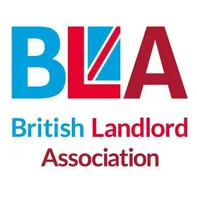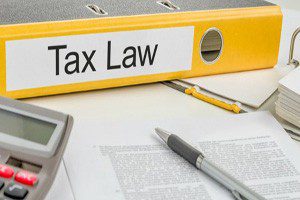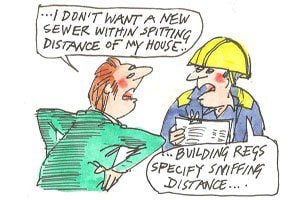Reduce your tax bill by claiming all your expenses and allowances
Many landlords are not claiming all they can to set off against the rental income.
The good news is that you can reduce your tax bill by claiming for many of the expenses you incur and setting them off against rental income.
But the tax rules can be quite confusing for some landlords. This guide explains some of what you need to know about allowances and expenses for landlords.
Allowable expenses a landlord can claim
As a general rule, landlords can claim the expenses of running and maintaining their property. Expenses claimed must be directly and exclusively for letting and managing the property.
The most common types of expenses you can deduct are:
- contents insurance
- costs of services, including the wages of gardeners and cleaners (as part of the rental agreement)
- letting agents’ fees
- legal fees for renewing a lease of less than 50 years
- rents, ground rents and service charges
- direct costs such as phone calls, stationery and advertising for new tenants
- water rates, council tax, gas and electricity
- travel expenses if using public transport, or using your own car, 45 pence per mile.
- Costs of services, including the wages of gardeners and cleaners
- Legal fees e.g. tenant eviction costs
- Accountants’ fees
- Maintenance and repairs to the property (but not improvements)
- Other direct costs of letting the property, like phone calls, stationery and advertising to find tenants
The expense you claim as a landlord should be exclusive as a result of renting out your property.
Where only part of the expense meets this condition, you can deduct that part from your income. For example, the cost of lighting and heating a property that is partly used for private purposes as well as renting.
If you let out only part of your home or let it out for only part of the year, you have to apportion your expenses accordingly.
You can also claim some of the interest on buy-to-let mortgages, but there are big changes in transition now and you will need to seek advice from your accountant regarding this.
The annual investment allowance for landlords
As a landlord, you cannot deduct expenses of a capital nature from the rental income you earn.
That means you cannot deduct the cost of building an extension or renovating a home that’s in a dilapidated state.
You may, however, be able to use the cost of major works (if they are not deductible against rental income) of these investments to reduce your capital gains tax bill when you come to sell your rental property.
Landlords “wear and tear allowance”
If the property or properties you let out are fully furnished, you used to be able to claim for wear and tear of furnishings, such as cookers, carpets, beds and televisions.
The wear and tear allowance did previously allow you to claim a maximum of 10% of the net annual rent (income fewer expenses) each year.
However, this has now changed and you can no longer claim the 10% deduction. The government now allows you to claim tax relief on items you spend on replacing what it labels as a ‘domestic item.’ This is a major change and almost affects all landlords.
It is important to understand this only applies to items you are replacing. You cannot claim tax relief on the actual cost of kitting out a property for the first time with furniture or appliances. It can only apply when an item is genuinely replaced and no longer used for the let property.
So what qualifies for the ‘replacement of domestic items relief’?
The HMRC lists a number of examples of what domestic items qualify for this new relief. These includes
- Replacement beds
- Replacement carpets
- Replacement crockery or cutlery
- Replacement curtains
- Replacement fridges, washing machines etc
- Replacement sofas
It’s worth remembering that you can only claim for a like-for-like replacement.
If, for example, you bought a new fridge worth £800, but the cost of replacing your old fridge with a very similar one was only £500, you’d only be able to claim £500 relief.
You can also claim for the cost of disposing of items (usually electrical goods).
Can I offset my mortgage payments?
Starting from the April 2017 tax year, the new tax legislation will start to be phased in. This ultimately means landlords will not be able to offset the interest from any loan (e.g. mortgages, overdrafts, loans to buy furnishings) anymore.
The restriction will be phased in gradually from 6th April 2017 and will be fully in place from 6 April 2020.
The table below shows how the legislation will get rolled out:
| Tax Year | Percentage of finance costs deductible from rental income | Percentage of basic rate tax reduction |
|---|---|---|
| 2017 – 2018 | 75% | 25% |
| 2018 – 2019 | 50% | 50% |
| 2019 – 2020 | 25% | 75% |
| 2020 – 2021 | 0% | 100% |
How does the ‘replacement of domestic items relief’ work?
You can deduct the cost of replacing domestic items from your rental income tax when calculating your net profit for the year, on which you pay tax.
You replace a number of items in your property, ready for some new tenants. These include curtains for £200, a washing machine for £250 (which also costs £50 to dispose of) and a new bed for £400.
The total relief you can claim for is £200 + £250 + £50 + £400, which amounts to £900.
This can be deducted from your annual rental income to work out your tax bill at the end of the tax year.
Our top read blogs:
Online Landlord training course for Members 2022
Tenant Referencing & Credit Checks Special offer 33% off Now





